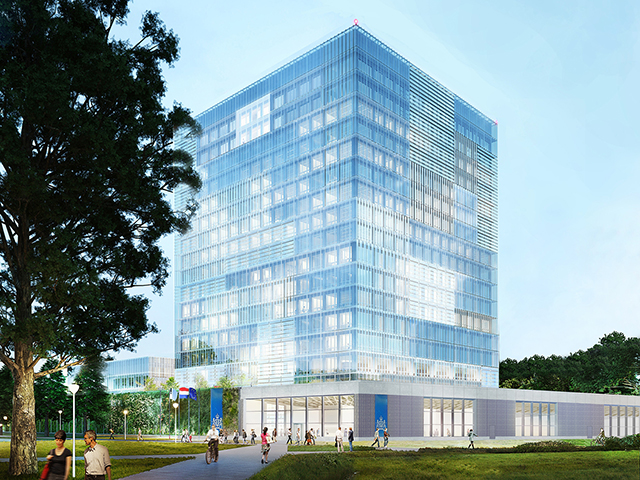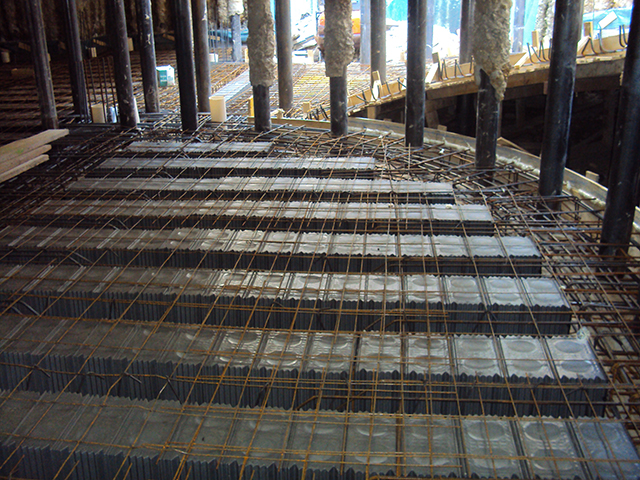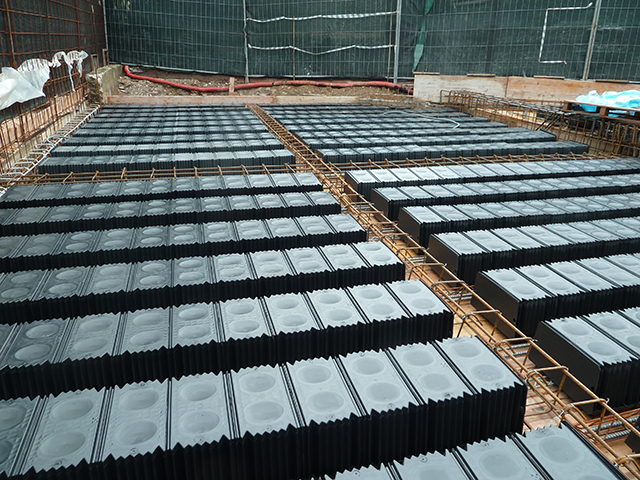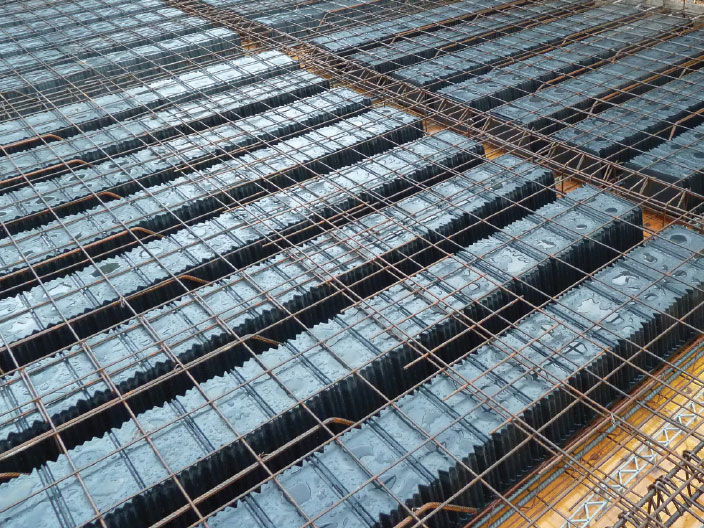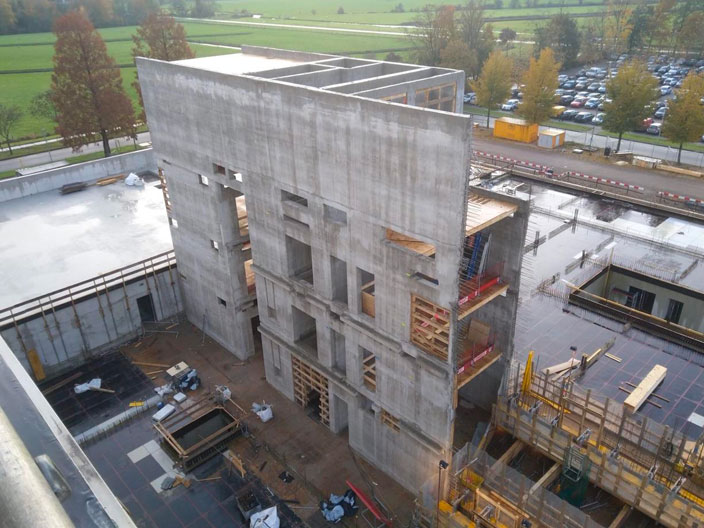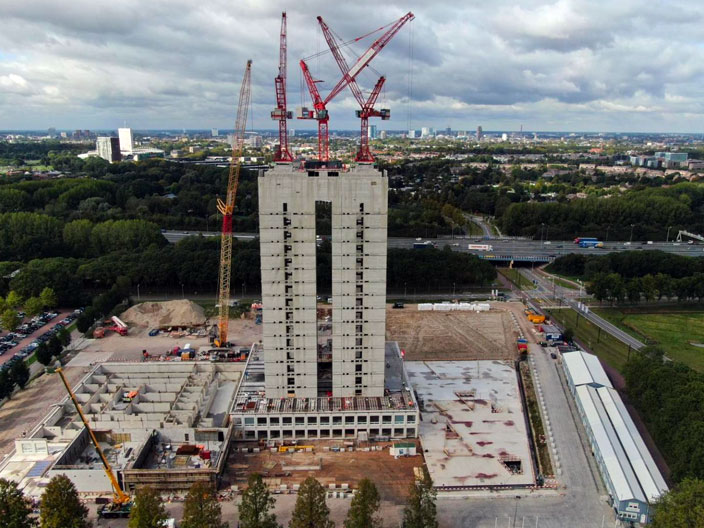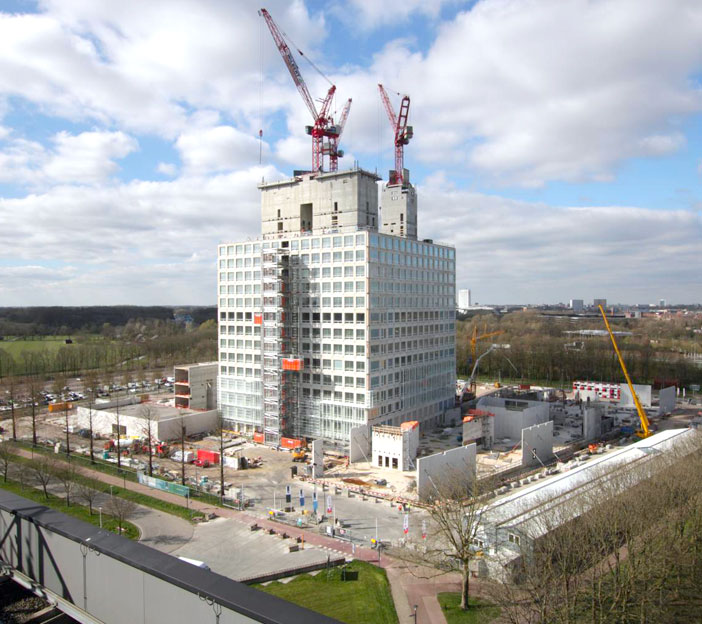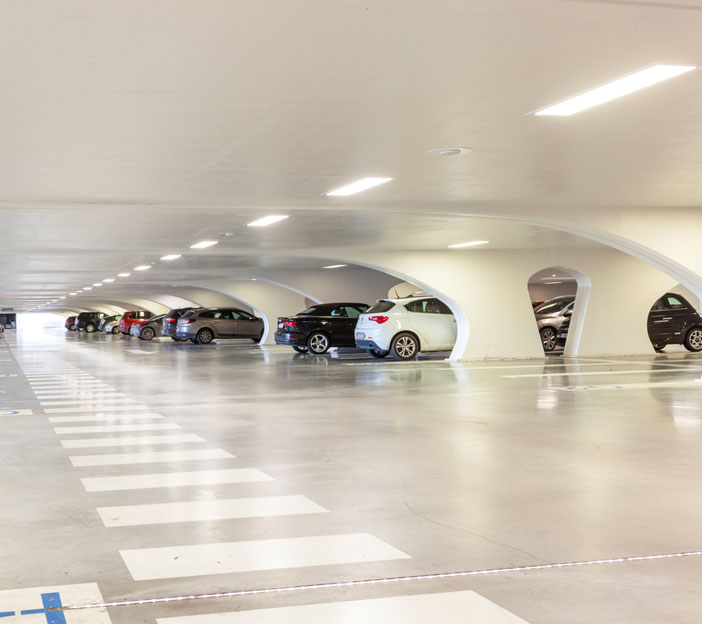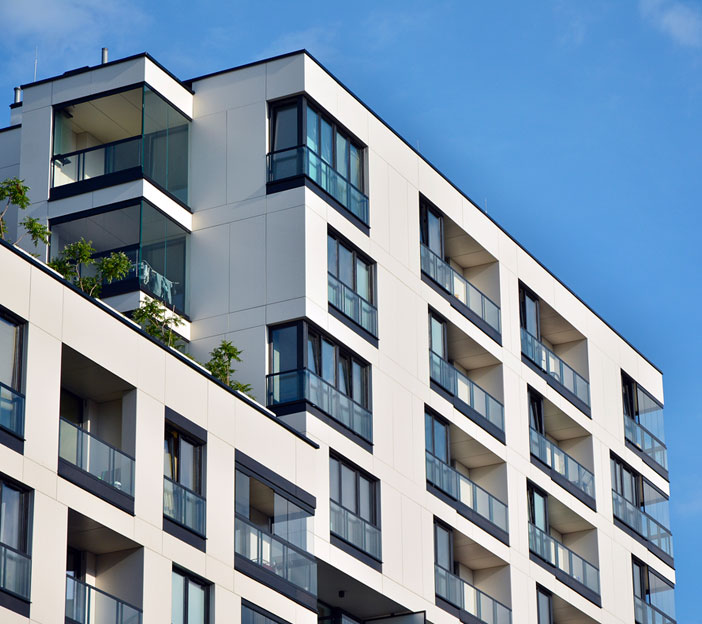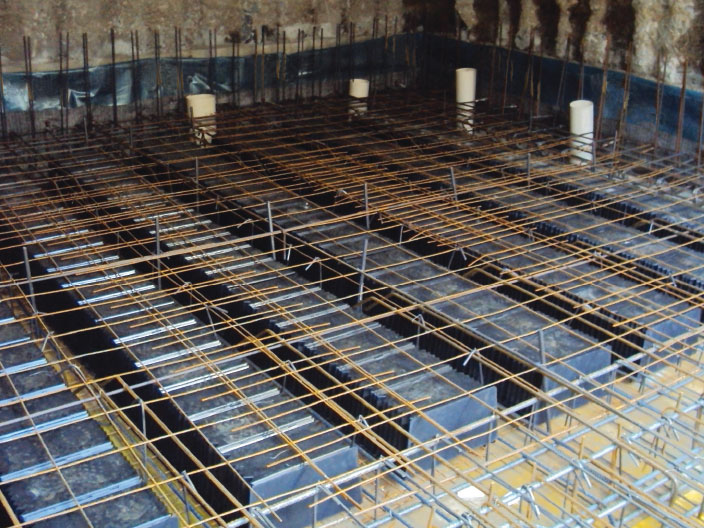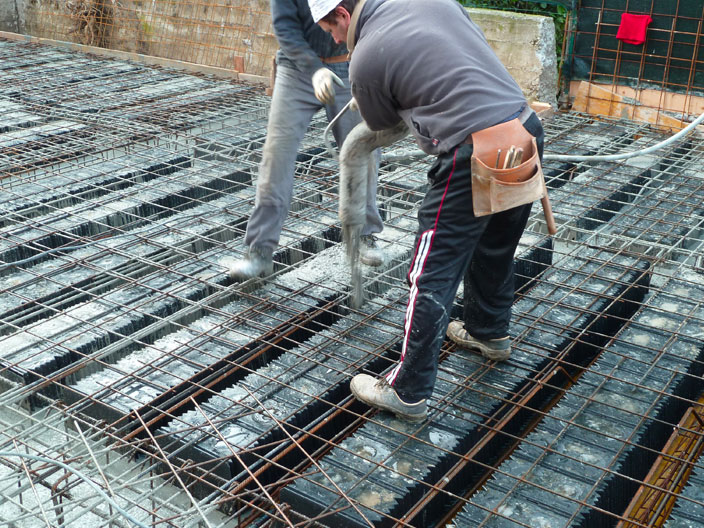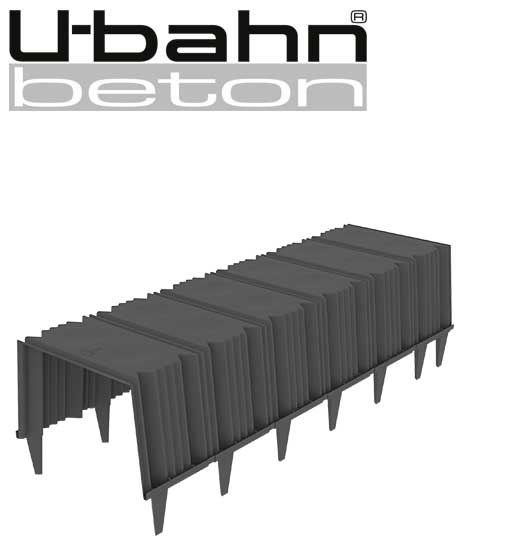
U-Bahn® Beton is a modular formworks in recycled plastic that was specifically designed to create one way slabs that are cast on site or semi-prefabricated.
The various modules, which overlap on the edges, make it possible to create beams of any length.
Thanks to its conic elevator feet, immersing the U-Bahn® Beton formworks in the concrete casting will obtain thick, parallel beams that are closed from the bottom and top by a flat plate made in sequence with a single casting; this results in reduced use of concrete and steel as well as considerable advantages in terms of fire risk in comparison to formworks in expanded polystyrene.
Light and stackable, it is easy to handle during positioning, functional in its use, can be exposed to bad weather and is easy to store in the yard with minimum dimensions.
Designed according to strict quality criteria, the U-Bahn® Beton permanent formwork is guaranteed to resist without concrete 150 kg concentrated on a load imprint of 8 x 8 cm, as foreseen by current regulations.
Unlike with the use of classical hollow brick blocks, the empty space left by U-Bahn® Beton can be used for the passage of cables and systems.

